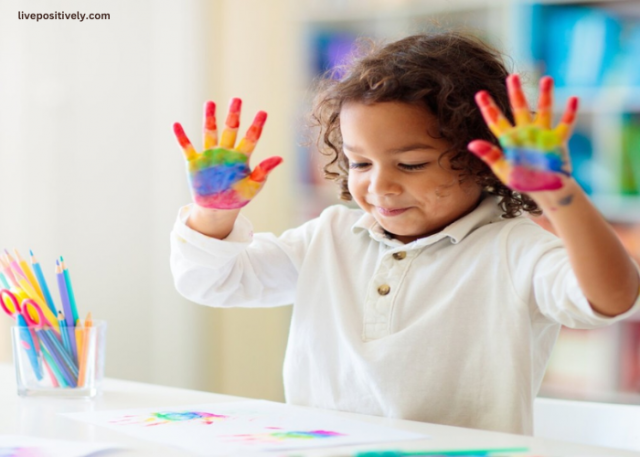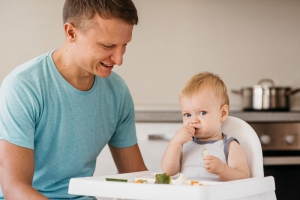The Gateway to Imagination
Toys—those delightful little objects that turn the mundane into the magical. In the hands of a child, a humble block can morph into a fortress, a spaceship, or even a dragon's nest. But beyond the giggles and chaos, toys are the unsung heroes of childhood development, sparking creativity like flint against stone. How do we, as adults, use these simple wonders to stoke the fires of imagination? Please grab a cup of tea and dive into this treasure trove of possibilities.
The Blank Canvas of Play
Children are born artists; they see blank spaces where we see walls. Hand them a box of mismatched LEGO pieces, and they'll build a masterpiece that defies physics and logic—but who cares about logic when you're the ruler of a candy-colored kingdom? The trick isn't to guide their play and let them lead the charge.
I remember giving my nephew a set of wooden blocks, expecting him to build a tower. Instead, he spent an hour arranging them into a “forest” for his stuffed animals. It was a good reminder that creativity doesn't come with instructions—the fewer rules, the bigger the dreams.
Breaking Out of the Plastic Mold
Let's be honest—many modern toys are creative on autopilot. Push this button, watch this light, hear that noise. It's a recipe for passive play, the antithesis of imagination. Choose toys that leave space for interpretation if you want to nurture a child's creativity.
Think clay over computers, cardboard over consoles. A simple cardboard box can become a pirate ship, a rocket, or a secret clubhouse, while clay can bring imaginary creatures to life. Open-ended toys don't entertain; they whisper, “What's next?”
The Role of Imperfection
Here's a hot take: perfection kills creativity. A shiny, pre-painted toy car is lovely, sure, but hand a child a blank one with markers and stickers, and you'll see their creativity shift into high gear. They might give it polka dots, flames, or a face that looks suspiciously like the family cat.
Mistakes? Forget them. Celebrate them! When a child's tower collapses, it's not a failure—it's a chance to build something even wilder. Creativity thrives in the cracks of imperfection, growing like moss on a stone.
The Magic of Role Play
One of the greatest gifts toys give is the power of transformation. A piece of fabric becomes a superhero cape. A stick turns into a wizard's wand. Role-playing toys, whether a doctor's kit or a pirate's hat, open the door to worlds where kids can be anyone and anything.
Once, I watched my niece transform her room into a jungle using some plastic animals and an old scarf she insisted was a river. She became a “wildlife explorer,” narrating her adventures like a pro. It was a reminder that the best stories don't come from books; they come from kids' boundless imaginations.
Toys as Collaborators, Not Masters
A toy should be more of a co-pilot than a dictator. The best toys don't tell children what to do; they ask, “What do you want to do?” This collaborative nature allows kids to make decisions, test ideas, and explore creativity.
Take a pile of mismatched puzzle pieces, for example. Instead of finishing the puzzle “correctly,” kids might use it to build a pattern or create a new picture. Creativity becomes a dialogue when toys work with children rather than for them.
The Influence of Nature
Sometimes, the best toys aren't toys at all. A handful of pebbles, a fallen leaf, or a particularly twisty stick can spark more imagination than the flashiest gadget. Nature is the ultimate creative playground, offering endless opportunities to explore, build, and dream.
I once saw a group of kids use twigs and rocks to “cook” a feast of “soup” and “cake” in a hollow tree trunk: no batteries, no manuals—unfiltered creativity. When we let children engage with the natural world, we give them the raw materials to build dreams.
Books: The Secret Toy Chest
Yes, I know books aren't toys in the traditional sense, but hear me out. A good book is a gateway drug to creativity. Stories light up the imagination, allowing children to envision worlds far beyond their own. And when the book is closed? That's when the magic truly begins.
A child inspired by a dragon tale might turn their backyard into a medieval battleground. A story about astronauts could lead to hours of space exploration using furniture as the “ship.” Books plant seeds; toys help them grow.
When Parents Step Back
It's tempting to direct playtime, to “help” kids do it the “right” way. But sometimes, the most creative moments happen when parents step back. Let them make a mess, break the rules, and reinvent the wheel.
Once, I watched my cousin's kids turn their train set into a racetrack for marbles. It wasn't what the set was designed for, but it was far more fun than any instruction manual could've promised.
Creativity Beyond the Playroom
The skills children develop through creative play don't stay in the toybox—they spill over into every part of their lives. Problem-solving, resilience, and collaboration are the side effects of unstructured, imaginative play.
A child who builds a crooked tower learns about balance. A child who creates a puppet show discovers the art of storytelling. These lessons stick, shaping how they approach challenges and opportunities in the real world.
The Toybox of Tomorrow
As adults, it's easy to forget how powerful toys can be. But when we give kids the right tools—open-ended, imperfect, and full of potential—we're setting them up for a lifetime of creativity.
So, the next time you choose a gift for a child, skip the flashing lights and pre-packaged fun. Look for something that whispers possibilities. Regarding sparking imagination, toys are more than playthings—they build a creative future.






